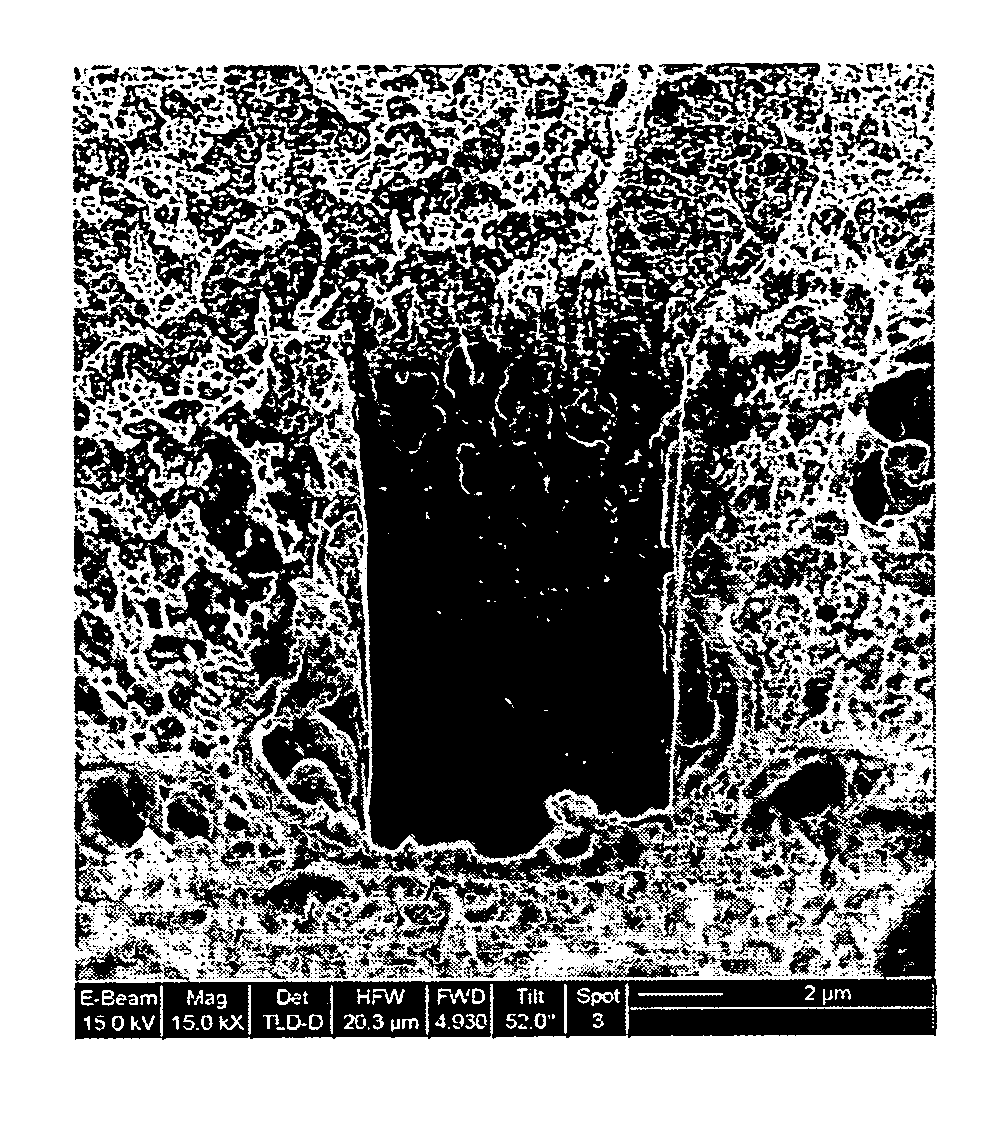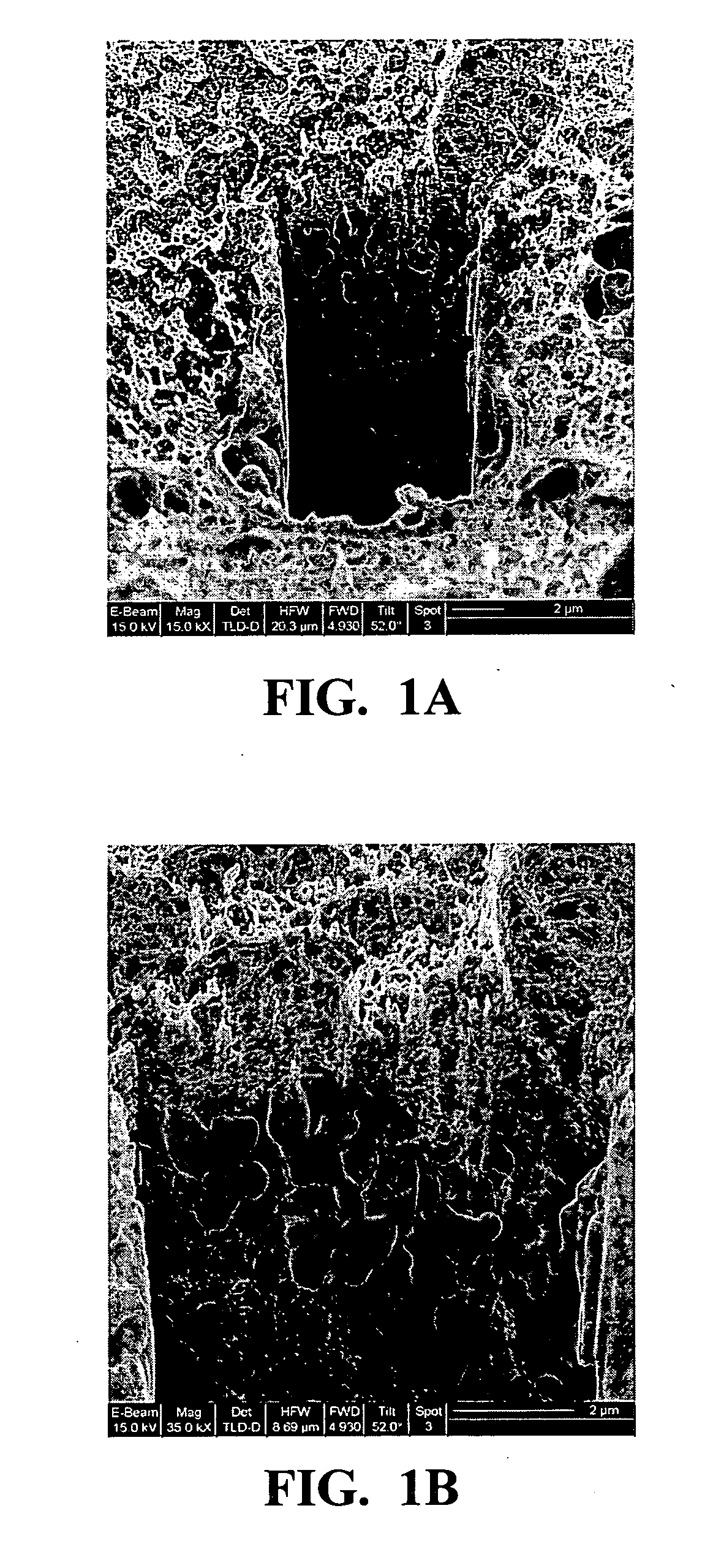Method for providing resistance to biofouling in a porous support
a technology of porous support and biofouling, applied in the field of material science, can solve the problems of difficult colonization of negatively charged and/or hydrophobic surfaces, significant biofouling of porous substrates,
- Summary
- Abstract
- Description
- Claims
- Application Information
AI Technical Summary
Benefits of technology
Problems solved by technology
Method used
Image
Examples
examples 1-6
[0082] The experimental parameters and biofouling resistance of Examples 1-6 of the invention are listed in Table 1. Unless otherwise indicated, a porous supports were treated in the following manner: a 2 wt % of the indicated organogelator in n-butanol was mixed in a reaction vial to form a slurry, followed by immersing a sample (several square centimeters) of the indicated support material into the slurry, heating the immersed sample to a temperature of about 95° C., stirring for about 1 hour and cooling to form a gel. The coated support so formed was removed from the reaction vial, and where necessary, bulk excess gel was removed from the coated support with tweezers and if indicated, remaining excess gel was scraped from the support.
[0083] Drying to provide the nanoweb was conducted using one of two methods: critical point drying (CPD), or vacuum oven drying (VO).
[0084] A critical point drying apparatus (Balzers CPD 020) was used for the CPD. The instrument consisted of a cham...
example 7
[0086] This example illustrates the methods used to measure the ability of the treated supports to resist colonization by Escherichia coli in a short term exposure.
[0087] Organism, media, and culture conditions. Escherichia coli ATCC 25922 was obtained from the American Type Culture Collection (Manassas, Va.). Frozen permanent cultures were maintained at −70° C. using the Microbank® system (Pro-Lab Diagnostics, Richmond Hill, ON, Canada). Working stocks were prepared by removing a bead from the culture vial and rolling it on the surface of a nutrient agar plate, followed by incubating the plate overnight. An isolated colony was picked and re-streaked to a fresh nutrient agar plate to produce a working stock plate. To make overnight cultures, a single colony was picked from the working stock and inoculated into trypticase soy broth (Difco™, TSB). The working stock cultures were replaced every few weeks. Overnight cultures were grown in an incubator, with shaking, at 37° C.
[0088] Cu...
PUM
| Property | Measurement | Unit |
|---|---|---|
| pore diameter | aaaaa | aaaaa |
| pore diameter | aaaaa | aaaaa |
| diameter | aaaaa | aaaaa |
Abstract
Description
Claims
Application Information
 Login to View More
Login to View More - R&D
- Intellectual Property
- Life Sciences
- Materials
- Tech Scout
- Unparalleled Data Quality
- Higher Quality Content
- 60% Fewer Hallucinations
Browse by: Latest US Patents, China's latest patents, Technical Efficacy Thesaurus, Application Domain, Technology Topic, Popular Technical Reports.
© 2025 PatSnap. All rights reserved.Legal|Privacy policy|Modern Slavery Act Transparency Statement|Sitemap|About US| Contact US: help@patsnap.com



